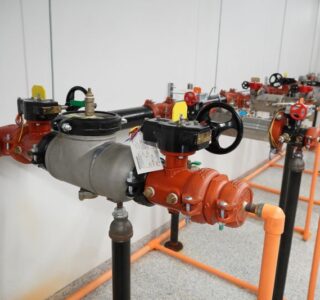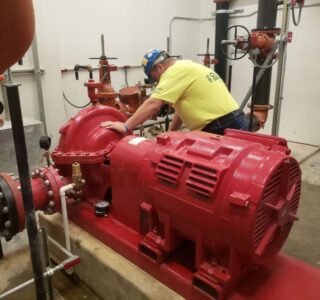When it comes to fire protection and fire codes, the details matter—especially the language used in the codes and standards that govern life safety systems. At Oliver Fire Protection, we often encounter questions from building owners, contractors, and even industry professionals about the difference between the words should and shall in fire codes. It might […]
Tag: Fire Suppression

Why is backflow from fire sprinkler systems especially alarming?
In wet fire protection systems like certain types of sprinklers and standpipes, a large volume of water never moves until it flows from an activated sprinkler head or a broken sprinkler pipe. When water sits, it becomes stagnant. Bacteria can grow, transforming the sprinkler water into a thick, smelly, black oily sludge that could potentially […]

Safety First: A Proactive Approach to Fire Protection & Security at Entertainment Venues
We’ve all heard this phrase since we were in diapers—even if we were too young to understand the meaning behind the words. Still, the message remains the same: before we do anything fun or fast, we must incorporate safety. Failing to take the proper steps can turn a good time into a dangerous situation in […]

The Importance of Fire Protection in Hospitals
Fire sprinklers play a critical role in hospital safety by providing rapid, automatic response to fire outbreaks. Hospitals care for vulnerable populations—patients in intensive care, those with limited mobility, and individuals who can’t evacuate quickly. In these situations, every second matters. Fire sprinklers can control or extinguish fires before they spread, buying time for staff […]

The Critical Need For Fire Alarm Systems In Homeless Shelters and Rehabilitation Facilities
In times of crisis, providing a safe refuge for vulnerable populations is essential. Homeless shelters and rehabilitation facilities play a crucial role in offering support and a sense of security to those in need. These facilities offer not only a roof overhead but also safety, warmth, and dignity during some of the most vulnerable moments […]

Preventative Maintenance for Fire Sprinkler Systems
In my 28 years of fire sprinkler experience, I’ve seen countless situations where a minor repair or scheduled maintenance could have prevented a massive and costly repair—if not a catastrophic failure or, even worse, a life-threatening situation. Fire sprinkler systems are incredibly effective, but like any mechanical system, they require routine upkeep to function properly […]
Created by: Design Data Concepts, LLC

